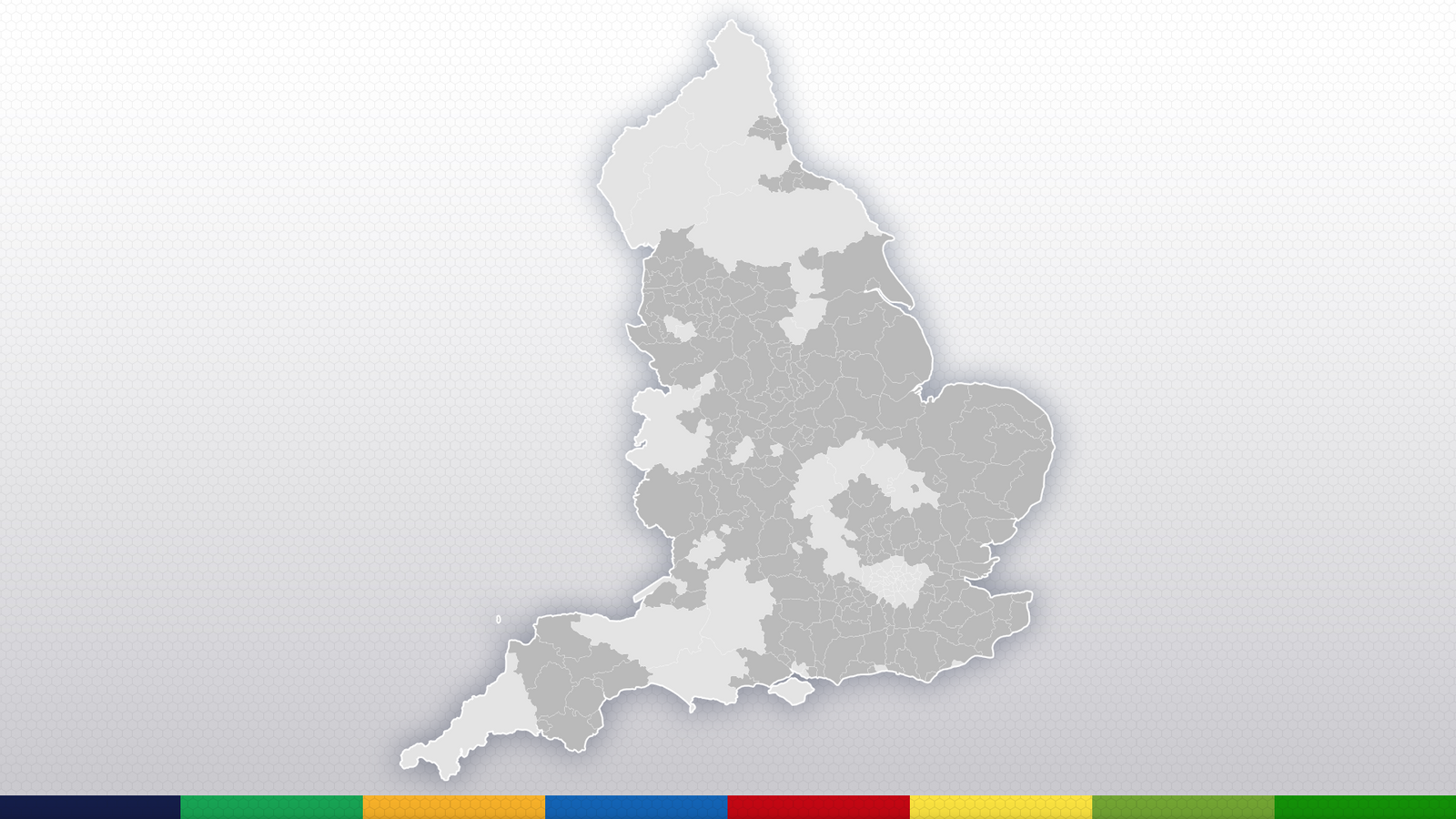Labour is now the largest party of local government – overtaking the Conservatives for the first time since 2002.
The party achieved the milestone after picking up more than 400 seats by early Friday evening.
By contrast, the Conservatives endured a torrid evening, losing more than 750 seats.
Councils representing seven in 10 people in England have been up for grabs in what is the biggest electoral test for Rishi Sunak and Sir Keir Starmer before a general election.
With more than half of the results declared, we’re starting to see a picture forming as to how the country’s political preferences have changed.
Which councils have changed hands?
Labour’s biggest gains so far are Medway, in Kent, and Swindon, in Wiltshire. It’s the first time they have ever had a majority in Medway while Swindon is an important swing seat and key target for Labour where Sir Keir Starmer kicked off the election campaign.
Labour has taken control of 20 councils, six of which they have taken directly from the Conservatives.
Labour has also come close to regaining control over two of its key red wall targets in the Tees Valley. The party is now one seat short of an overall majority in Darlington and Hartlepool, with the two councils remaining under no overall control.
They won Plymouth after the Conservatives were only able to defend one of their nine seats in this election, and took Stoke-on-Trent after making 10 gains, nine of which were from independents and other parties.
Labour’s only loss so far has been Slough, where the party lost half its seats. The council is now under no overall control.
The Conservatives have gained control of just two councils so far and lost control in 44 others: 16 in the Midlands, 15 in the South, nine in the East, two in the North West and one in Yorkshire. Six of those are now under Labour control, while four have been taken by the Liberal Democrats. The rest are under no overall control, meaning no single party has a majority.
Most of the councils which counted their votes overnight are areas where just a third of seats were up for grabs in this election, which mean they are less susceptible to overall change in council control – parties have a baseline of seats to fall back on which aren’t up for election.
More of those which start counting on Friday are whole councils, so we could see more wholesale change as results continue to come in this afternoon.
Many of these councils are in the South – a region where the Conservatives have seen some of their worst results so far.
Who’s having a good night?
The Conservatives have lost over 500 seats already, while Labour have made more than 280 gains.
The remainder of the Conservative seat losses split between the Lib Dems and the Greens.
There’s still a way to go, but on results so far it looks like the Conservatives are performing about as poorly as pre-election expectations got to. What remains to be seen is whether Labour are doing enough to look like a government-in-waiting.
Are Labour doing enough to be general election frontrunners?
Labour has maintained roughly a 20-point lead in the polls since Rishi Sunak became prime minister. However, they also tend to underperform their polling in local elections, by about six points on average.
We’re a little way off working out what the national vote share looks like based on these elections, but results so far show that Labour is in a much better place than it was in 2019, when the party suffered its worst general election defeat since 1935.
In those wards so far that also voted in 2019, Labour has won 36% of the vote. That’s up from just 29% in 2019 – an increase of 6.1 percentage points.
The Conservatives, by contrast, have seen their share of the vote in these wards fall from 30% to 28%.
A look at those 599 wards which had elections last year, however, suggests Labour could be at risk of losing momentum.
The party’s vote share in those wards has risen only slightly, from 40% last year to 41% in yesterday’s elections.
Fortunately for Labour, things have changed for the Conservatives in the past year. The governing party’s vote share in these wards has fallen to 27%, down from 31% in last year’s elections.
That’s the big picture, but you can see how the parties have fared in your council using the dropdown on the chart below.
Are Labour winning votes in the right areas?
A key part of analysing whether these results show Labour are in a position to win an election is looking at whether they are winning in areas where the Conservatives are currently in control. There’s some good news and some bad news.
Labour vote share is up higher in areas where the Conservatives are currently ahead and Labour are within touching distance (15 percentage points). However the overall swing of votes to Labour is lower in those areas, as the Conservative vote is also up in those places.
Conservatives are losing votes fastest in the south, often in areas where the Lib Dems are their main rivals. Given the Lib Dems strong performance in 2019, their vote share increase is limited but the Conservatives are losing further ground in these areas.
Which sorts of people are Labour appealing to?
So far, Labour has seen its vote increase most in areas that voted to leave the EU in 2016, typically with fewer university graduates and more working-class voters.
This represents a reversal of trends in recent elections – which had suggested the party was losing its grip on its traditional heartlands.
The Conservatives, by contrast, have seen big falls in their support in areas with younger, professional Remain-voting areas with higher numbers of graduates.
Confronted with an emboldened Labour party in the North, and increasingly confident Lib Dems in the South, the government faces a nasty pincer movement.






















